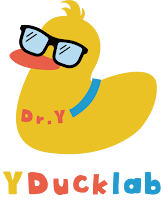1. Introduction
Despite heavy investments, previous AI adoptions,
including Big Data Lakes, often fell short of expectations. Although
infrastructure and funding were in place, they failed to generate substantial
business value. However, 2025 is set to be the turning point, with B2B-specific
AI agents progressively meeting expectations. Companies will prioritize
technologies that deliver financial results, focusing on reducing labor costs
and enhancing efficiency through automation. In this regard, AI agents will
play a pivotal role in organizational streamlining.
2. Key Differences Between Traditional Language Models
and AI Agents
- Scope of
Use
- Traditional
Models:
Primarily used for text generation and summarization with limited
applications.
- AI
Agents:
Designed for complex tasks and goal achievement, enabling automation
across diverse business processes.
- Planning
and Execution
- Traditional
Models:
Limited capability to independently plan and execute tasks.
- AI
Agents:
Capable of independently planning and executing tasks to achieve goals
with minimal human oversight.
- Autonomy
- Traditional
Models:
Operate reactively based on user input without decision-making
capabilities.
- AI
Agents:
Possess autonomy to independently determine and execute actions required
to achieve predefined goals.
- Integration
with Tools and Systems
- Traditional
Models:
Limited ability to integrate with external tools or systems.
- AI
Agents:
Seamlessly integrate with various tools and systems to automate complex
tasks and enhance efficiency.
- Learning
and Adaptation
- Traditional
Models:
Operate based on pre-trained data with limited adaptability to new
situations.
- AI
Agents:
Continuously learn from new data and adapt to environmental changes,
improving performance over time.
These distinctions position AI agents as transformative
solutions across areas such as business process automation, customer service
enhancement, and data analytics.
3. The Rise of AI Agents in 2025
Gartner defines AI agents as "Agentic AI" in
its "Top 10 Strategic Technology Trends for 2025." These agents
autonomously plan and act to achieve user-defined goals, automating tasks
traditionally performed by humans or existing applications.
Capgemini's "2025 Technology Trends" report
predicts that by 2025, 82% of companies will adopt AI agents. The market size
is expected to grow from $5.1 billion in 2024 to $47.1 billion by 2030 (Source).
- 51% of
companies are expected to partially or fully implement AI agents by 2025.
- Among
large enterprises with annual revenues over $10 billion, 45% have already
adopted AI agents, compared to 21% of smaller companies.
AI agents are likely to become specialized platforms
tailored to industry knowledge or services, creating a robust B2B ecosystem.
However, their widespread adoption could lead to workforce restructuring,
potentially contributing to job displacement and economic polarization.
4. Industry Use Cases
Microsoft: Magentic-One Framework
- Overview: Microsoft introduced Magentic-One, an
open-source multi-agent framework based on Microsoft AutoGen. It allows
for the easy development of multi-agent applications.
- Key
Features:
- Includes
an orchestrator coordinating multiple support agents like WebSurfer (web
exploration), FileSurfer (local file navigation), and Coder (code
generation and execution).
- The
orchestrator plans tasks, monitors progress, and adjusts strategies as
needed.
(PDF : Microsoft Magentic-One Framework)
Salesforce: Agentforce 2.0
- Upgrading
its generative AI platform for enterprises, Agentforce 2.0, to offer
enhanced customization and scalability.
Stripe: AI SDK for Financial Transactions
- Overview: Stripe introduced an AI SDK enabling LLMs to
handle financial transactions such as payments and invoicing.
- Key
Features:
- Integration
with platforms like Vercel and LangChainAI, allowing simplified access to
APIs.
Dell: AI Factory with NVIDIA
- Overview: Dell, in collaboration with NVIDIA, launched the
Dell AI Factory, a comprehensive solution for developing, training, and
deploying large-scale machine learning models.
- Key
Features:
- Supports
high-performance computing (HPC) and provides enterprise-grade
infrastructure for AI adoption.
Morgan Stanley: AI for Wealth Management
- Through
its partnership with OpenAI, Morgan Stanley provides high-value clients
with personalized financial advisory services powered by AI.
LinkedIn: GPT-4 Career Coach
- Leverages
OpenAI's GPT-4 to offer career coaching, resume analysis, and job matching
services.
Intel: CRM AI for Customer Engagement
- Overview: Intel’s AI solutions analyze customer behavior
and emotions, delivering personalized support through CRM tools.
Oracle: AI-Powered HCM Solutions
- Overview: Oracle’s AI-powered HCM systems streamline HR
processes like hiring and employee management while ensuring data
security.
긴 글 읽어주셔서 감사드립니다.
한글 버전을 원하시면 "여기"를 방문해 주세요









0 댓글